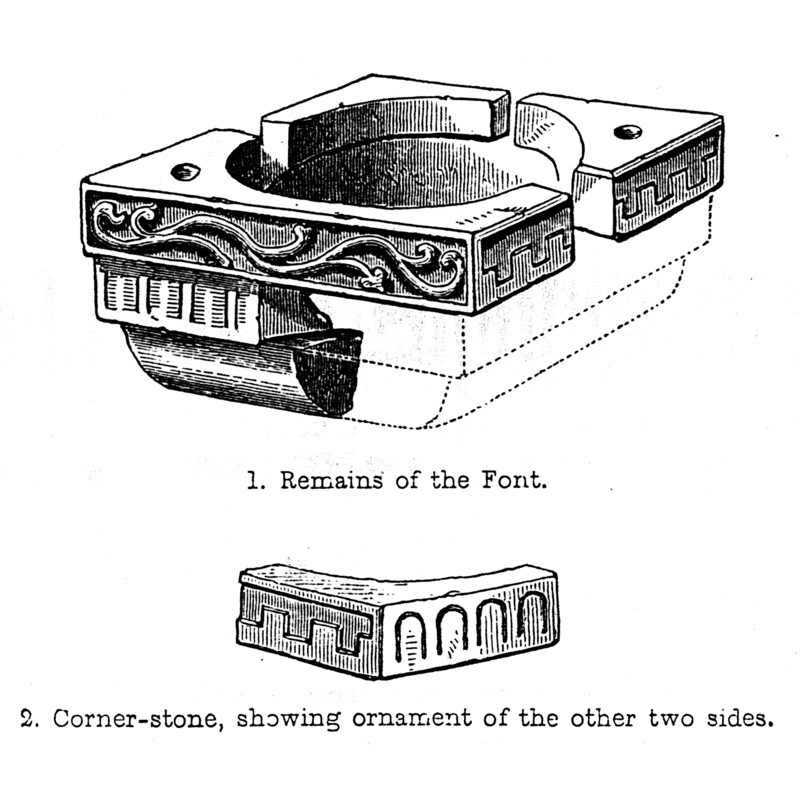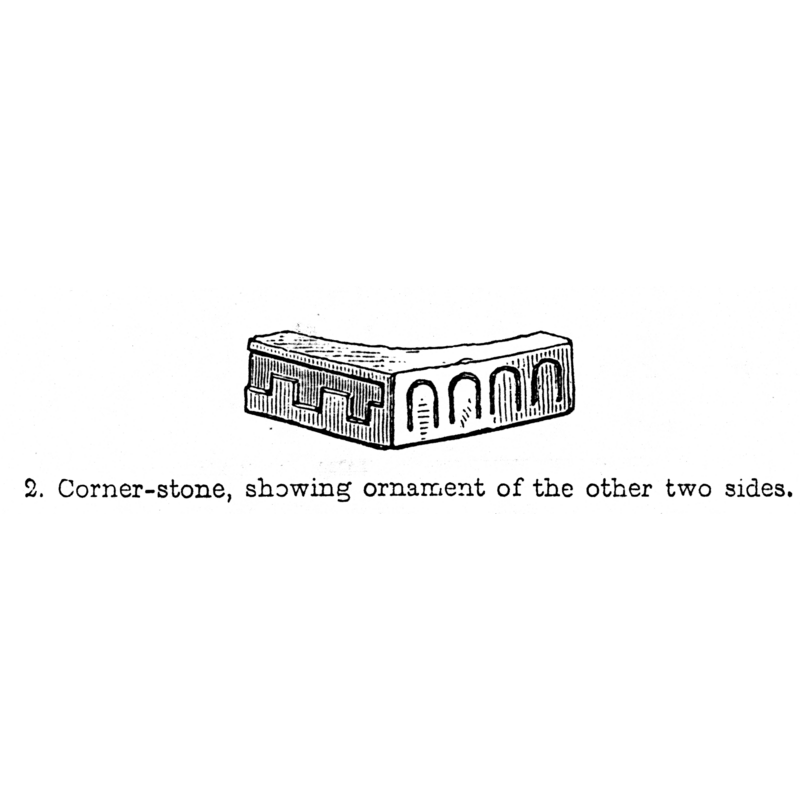Lyminge

Image copyright © [in the public domain]
PD
Results: 6 records
B01: design element - motifs - tendril
B02: design element - motifs - crenelated band
B03: design element - architectural - arch
view of basin
view of basin - detail
INFORMATION
FontID: 09306LYM
Object Type: Baptismal Font1 (fragment)
Church/Chapel: Parish Church of St. Mary and St. Ethelburga
Church Patron Saints: St. Mary the Virgin & St. Ethelburga
Country Name: England
Location: Kent, South East
Directions to Site: Located 6-7 km N of Hythe, just SW of Folkestone
Font Location in Church: Reported unearthed at this church ca. 1863
Century and Period: 13th century (early), Transitional / Early English
Font Notes:
Click to view
Described and illustrated by Robert C. Jenkins on 20 August 1863 in his letter reporting the discovery of some font fragments to Mr. Faussett of the Kent Archaeological Society, in Archaeologia cantiana (1863): "Under the foundations of two of the buttresses of the north aisle, which was completed by Cardinal Bourchier, about 1480-85, we found the two fragments of an ancient tomb, and beneath these the fragments of one of the earlier fonts of the church. The latter are of Bethersden stone, highly polished, the remains of the iron insertions for lights being still visible at the two opposite corners of the font [NB: could these be the holes for the hinges of the font cover, instead?]. The carving on two of the sides is an embatled ornament, larger on one side than on the other. On another side it represents a flowing pattern resembling a stem with berries, while on the opposite side there is a much ruder patern, not sunk into the stone, as in the other three sides, but merelly chiselled into it. Fragments of the lower portion were likewise obtained sufficient to show that the form of the font was like that indicated by the dotted lines [i.e., square with a rounded underbowl -- cf. Images area]. I conceive that it must have belonged to the early part of the thirteenth century." Glynne (1877) mentions a modern font in this church.
MEDIUM AND MEASUREMENTS
Material: stone, Bethersden stone [local Kent stone]
Number of Pieces: [fragments]
Font Shape: square (mounted)
Basin Interior Shape: round
Basin Exterior Shape: square
LID INFORMATION
Notes: [two holes in the rim, at opposite angles, probably from the hinges of font cover]
REFERENCES
Glynne, Steven Richard, Sir, Notes on the churches of Kent, London: John Murray, 1877
Jenkins, Robert C., "Discovery of an Early Font and Coffin-lid at Lyminge", 5 (1863), Archaeologia Cantiana, 1863, pp. 331-332; p. 331-332
![on the first [front?] side of the basin](/static-50478a99ec6f36a15d6234548c59f63da52304e5/compressed/0040304001_compressed.png)
